It’s that time of year again! It’s time to figure out what we are doing for school this year. I have a bit of eclectic approach leaning towards Charlotte Mason when it comes to homeschooling. This means that each year may look a bit different. I’ve kept some constants, which I will share, but I try to remain flexible to meet the educational needs of my children.
Come along with me as I walk you through this year’s “get-ready-for-school” excitement.
Planning
My planning starts by setting up student pages for each of my children. I use the homeschool section in the Torah Family Living planner. I lay it out one subject in each box. Some subjects are easy because I simply move them into the next book, for example, language arts. For subjects like history and science, I give my children a little bit of wiggle room on what they want to study as long as they are cycling through the various topics. If they have a natural interest in the subject matter, learning is going to be much more successful, so why not capitalize on it?
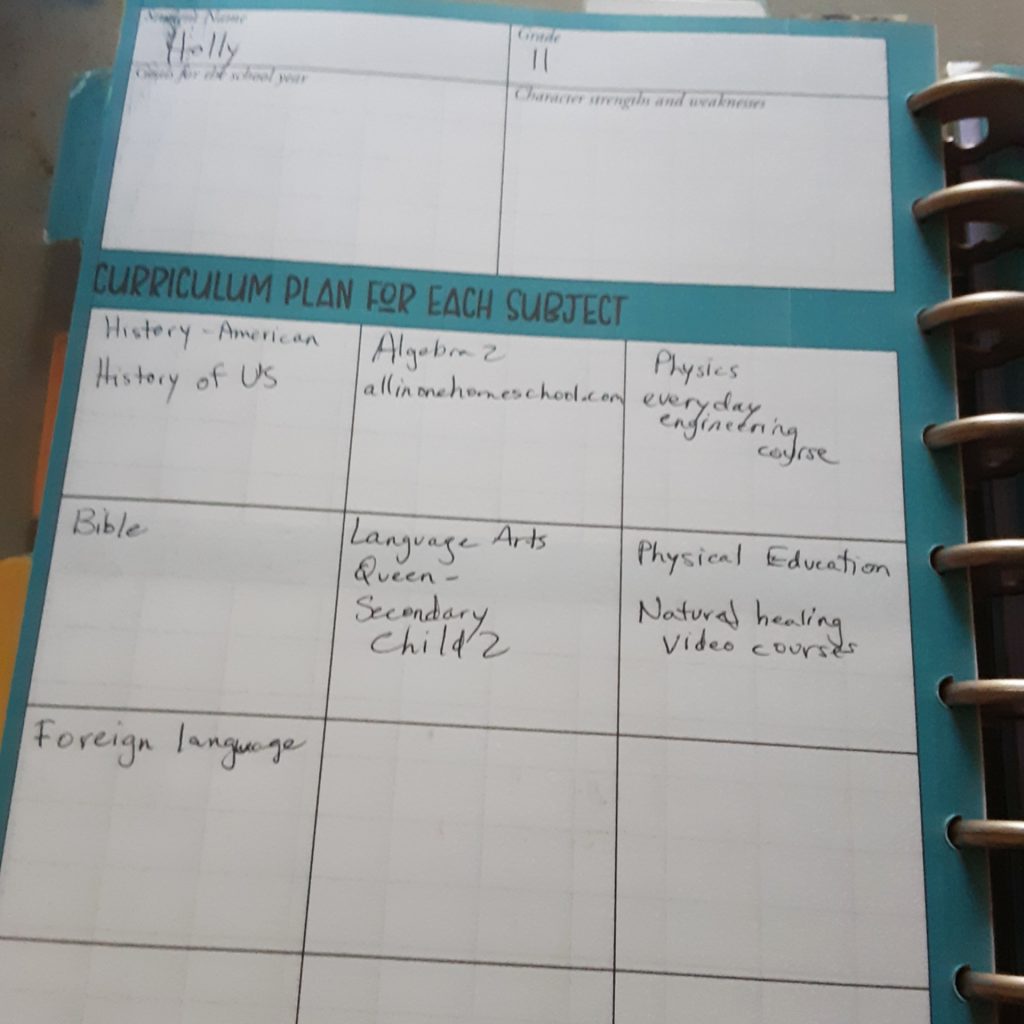
Here are some of the major history subjects:
- Ancient cultures, such as Egypt
- Ancient Greece and Rome
- Middle ages
- Renaissance and Reformation
- Explorers
- British Empire
- US history, which can be broken down further
- Modern history
- Israel history
- Far eastern culture
- African culture
- History of medicine, inventions, books, languages, etc.
Science topics can include:
- Geology
- Weather
- Zoology
- Botany
- Human anatomy
- Physics
- Engineering
- Chemistry
This year, we will be studying physics/engineering, biology, and human anatomy for science. In history, my children will be covering Ancient cultures, American history, and Modern history. I usually use books as a foundation, and flesh it out with videos, notebooking, etc.
Some of my favorite books and resources include:
- Queen homeschool language lessons series (affil. link)
- History of US, 10 book set (affil. link)
- Easy Peasy homeschool, free online lessons
Storing
We do not have a separate school room, so if you are in a similar situation, I hope my ideas will be helpful to you.
We do all our schoolwork at the kitchen table, with the exception of my older children. They work independently for most of their work, either perched on my king size bed, or in their bedroom. We have a bookcase in the living room, literally two steps from our kitchen table. It holds all our current school books, notebooks, and reference materials.
Take a look at the slideshow below to see how I have our bookcase set up.
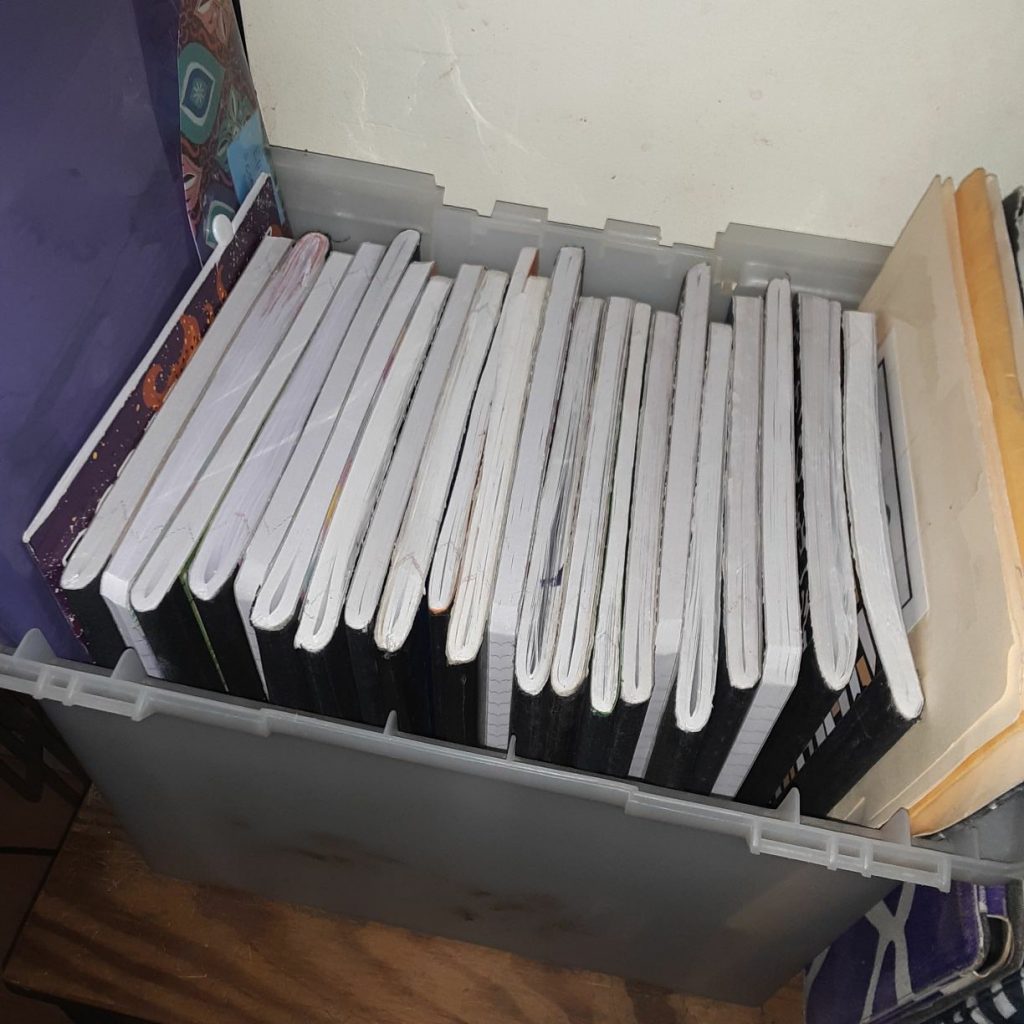
I love composition notebooks! 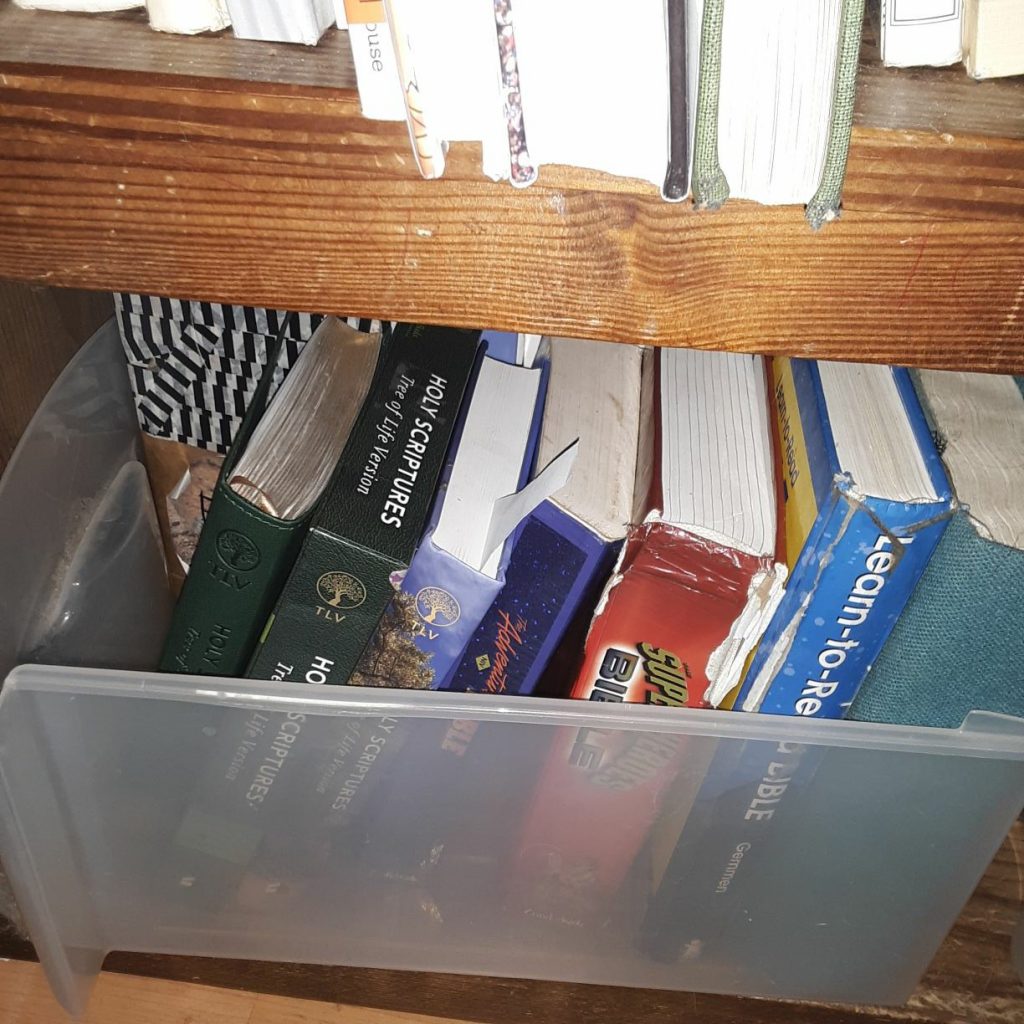
We keep all the Bibles in a bin on the bottom shelf. 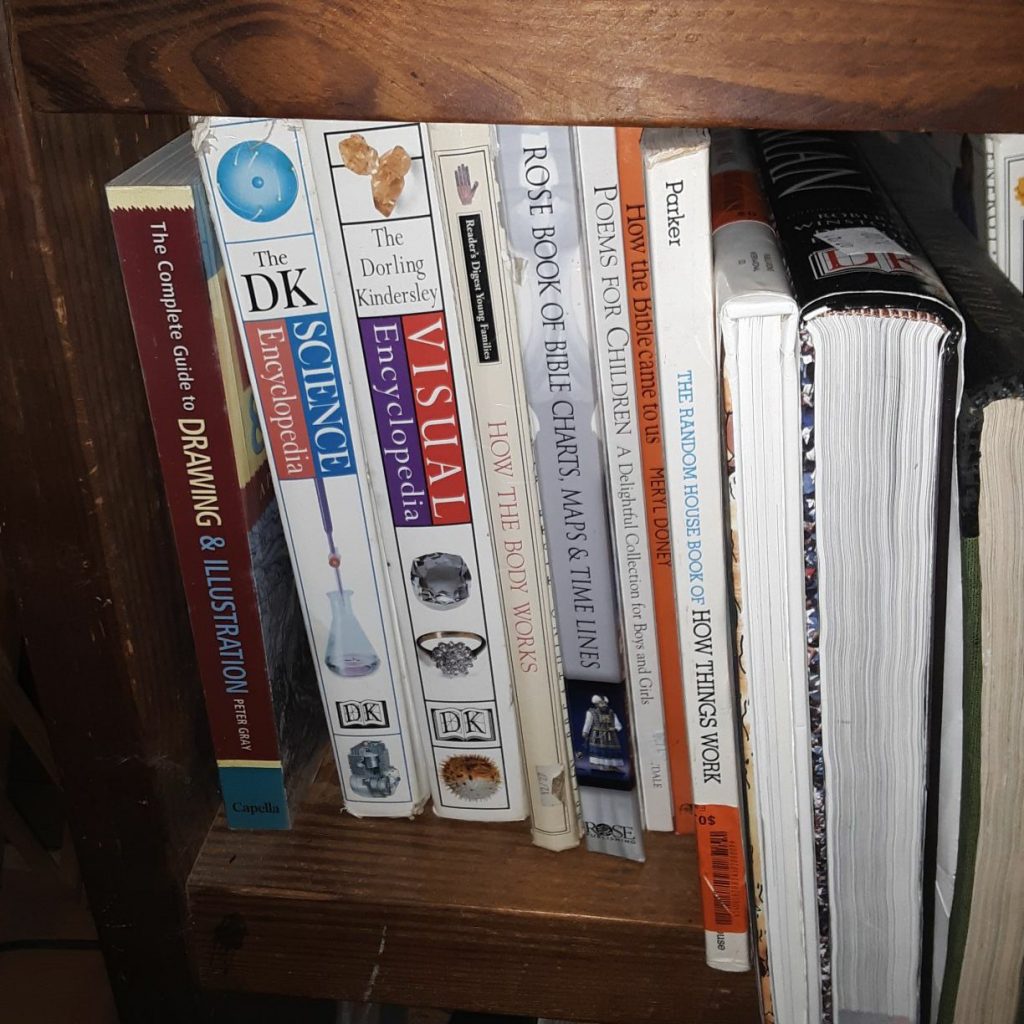
Here are some of our reference books, chosen to match our subjects for each year. 
This is our current school bookcase. Any books we aren’t using for the current school year get stored either in the garage or basement. 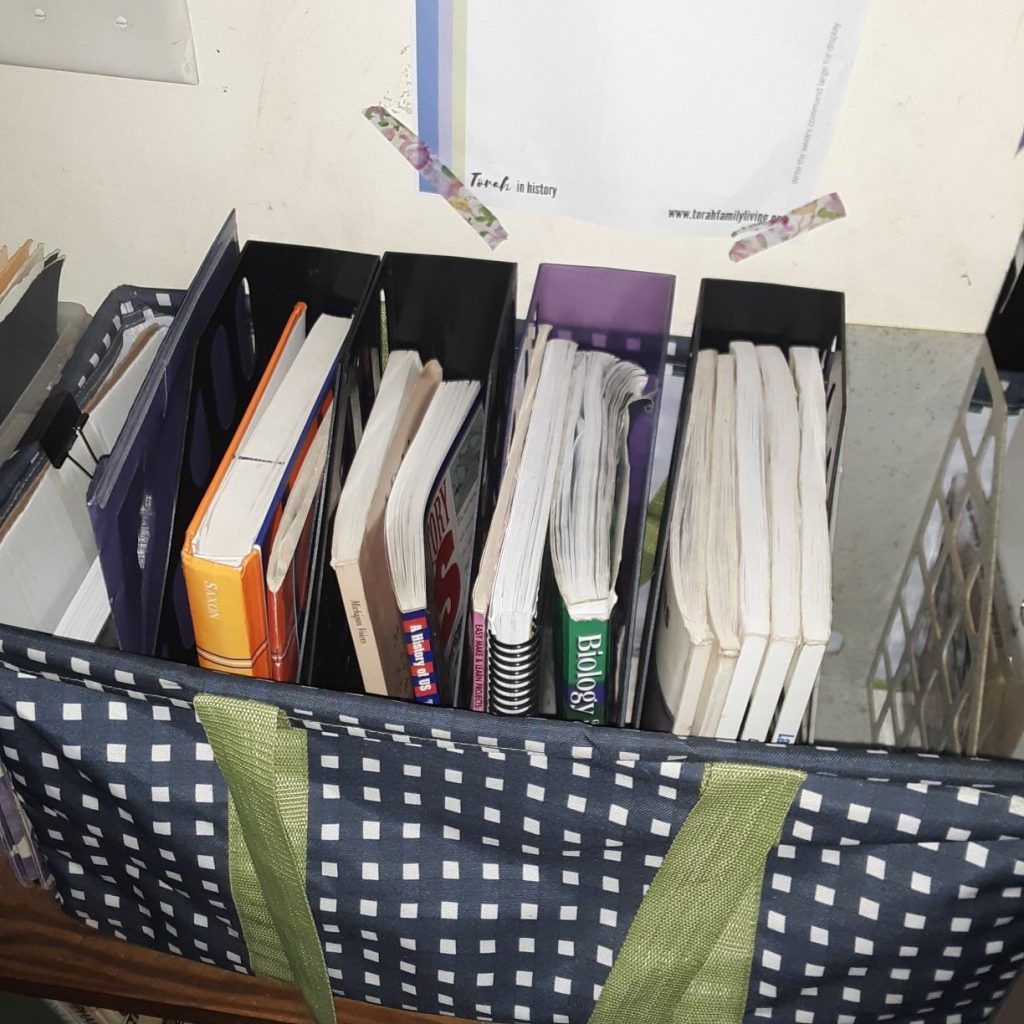
These are all textbooks that get grabbed every day. They are in magazine file boxes for easy access.
Organizing
Just for fun, I made a video showing you where we keep all our school supplies and math manipulatives. Everything fits on one of those nifty little metal carts that you can find in many stores now. It can get messy, so I clean it out as I show you what we use in the video. This cart has worked great for us for a few years now, and might just be a great solution for you, too!
Here’s some of the cool stuff we have on our cart, if you couldn’t make it all out in the video. I was doing double time, after all!
- Crayons, colored pencils, watercolor paint, pens, pencils, gel pens
- Math manipulatives including: calculators, protractor, ruler, dice, dominoes, tangrams, bottle caps, popsicle sticks
- Envelopes with word banks by subject
- Glue and glue sticks
- Acrylic paint and brushes
- Several card games
- Index cards (wow, these have a lot of uses!)
- Fun math worksheets for review
- Dry erase markers and erasers
- Scissors
- File folder games

Don’t forget Scripture!
Academics are important, but our children need a solid spiritual foundation most of all. They need Scripture infused into their day, and we as their parents, can help make that happen. Here are some ways we bring Scripture into our days.
Any of my children who can read independently are assigned one chapter of Scripture to read per day. They read through a book at a time, so they are always learning in context.
On Shabbat, we read through the current Torah portion together as a family, and look for connections to other events in Scripture at the same time.
When we study our school subjects, we use the concepts from Torah Learning Made Simple to compare what we are learning to Torah principles. Step one is to learn the commands in Scripture. Then we compare historical figures, characters in books, events, and more, to the commands we are learning. Torah Learning Made Simple gives you the framework, methods, and lots of printables to help you get going.
Make sure that you, as the parent, are filling your day with Scripture, too! It is easier to teach your children about YHVH when you are learning and excited first. So, make the time to read and study Scripture as often as you can. Here’s a free Scripture printable to get you started.
Go get planning!
I hope a peek into my school planning and organizing will help you get ready for school, too! You can sign up for my weekly email to get even more ideas!





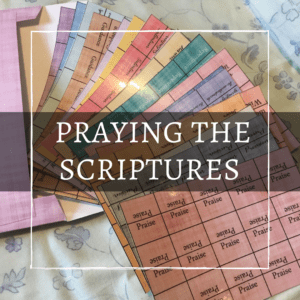






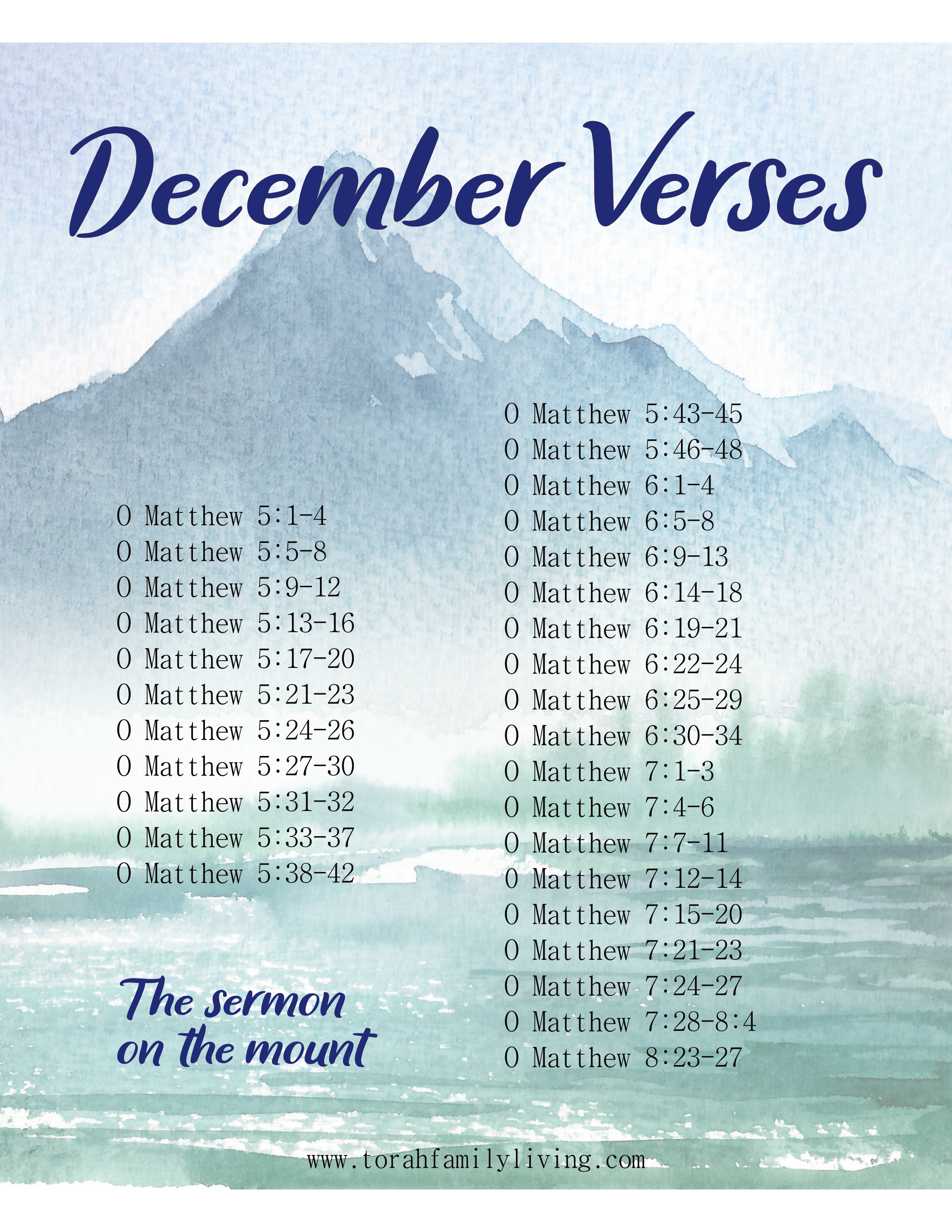
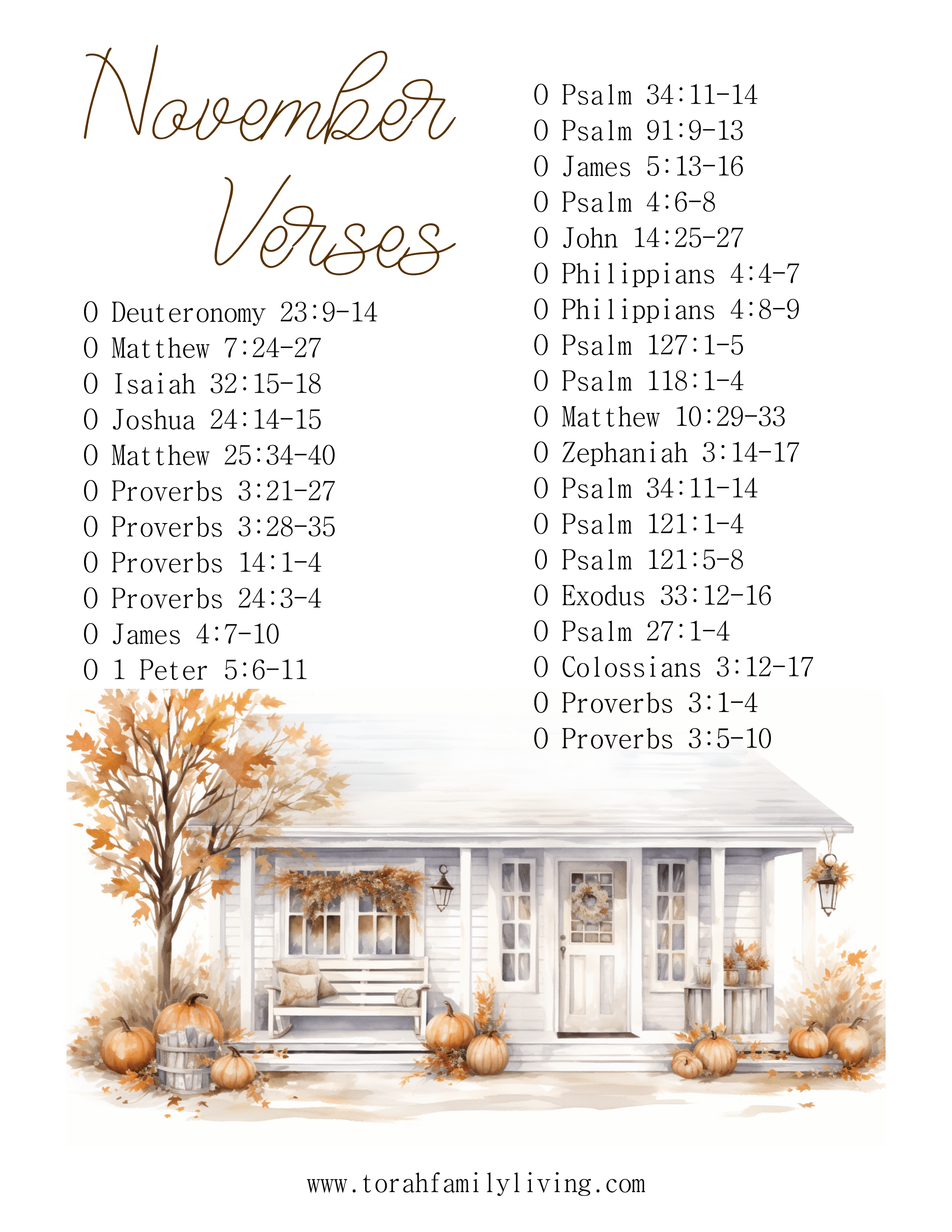

You must be logged in to post a comment.